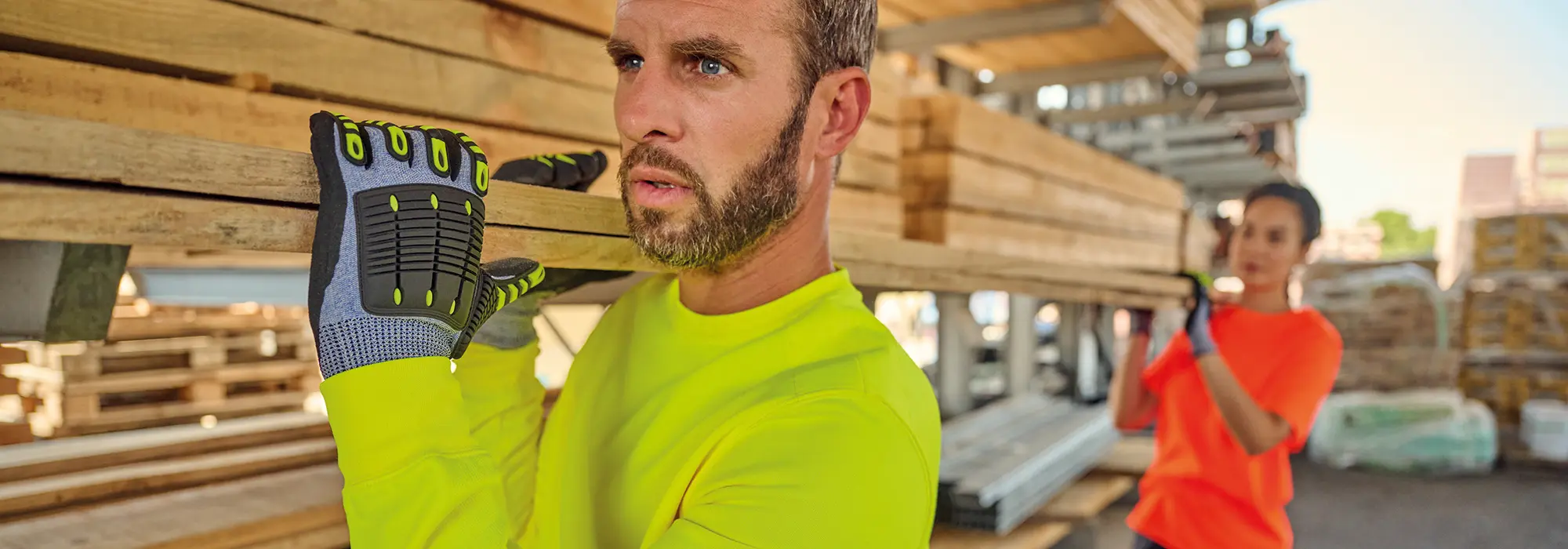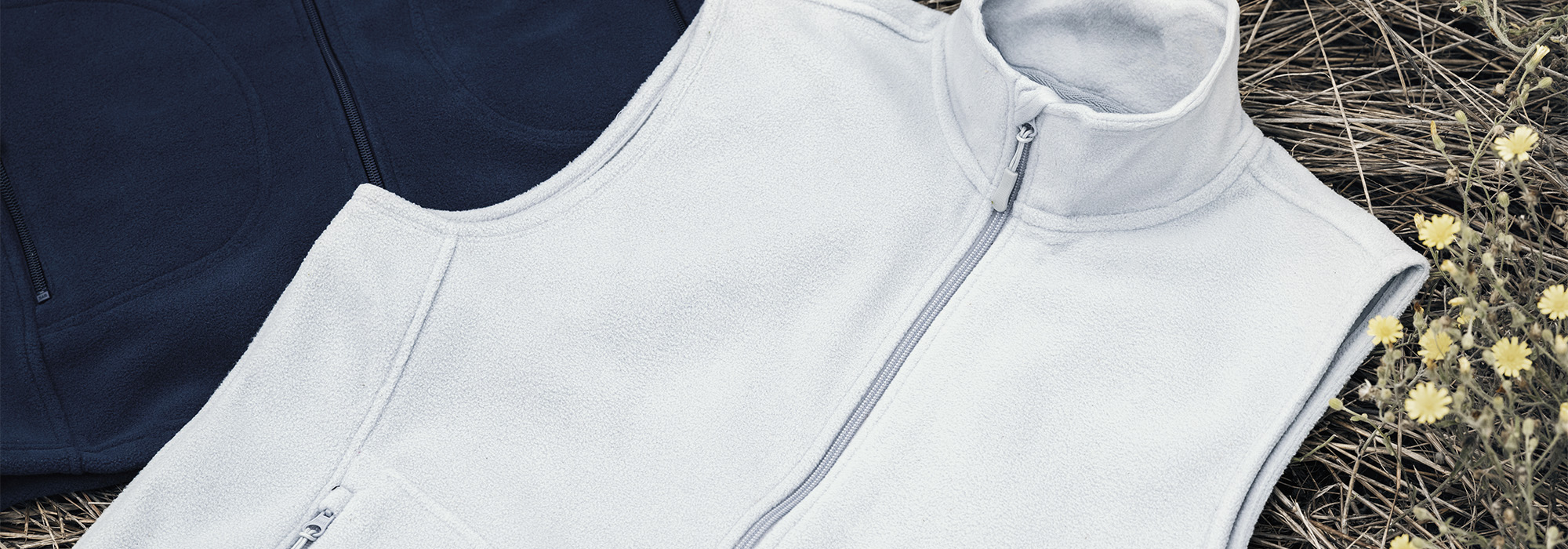Some occupations, such as construction or logistics, involve risks such as falls, cuts, impact and splashes. To protect themselves, the workers concerned must wear appropriate clothing and accessories, known as Personal Protective Equipment (PPE).
To be classified as PPE, this equipment must comply with strict standards, demonstrating its ability to maximise the safety of individuals exposed to danger in the course of their work.
This article will tell you a little more about the regulations governing this gear, as well as showing you a selection of Personal Protective Equipment available at TopTex. Of course, we’ll also take the opportunity to give you a few tips on selecting, marking and maintaining PPE.
Happy reading!
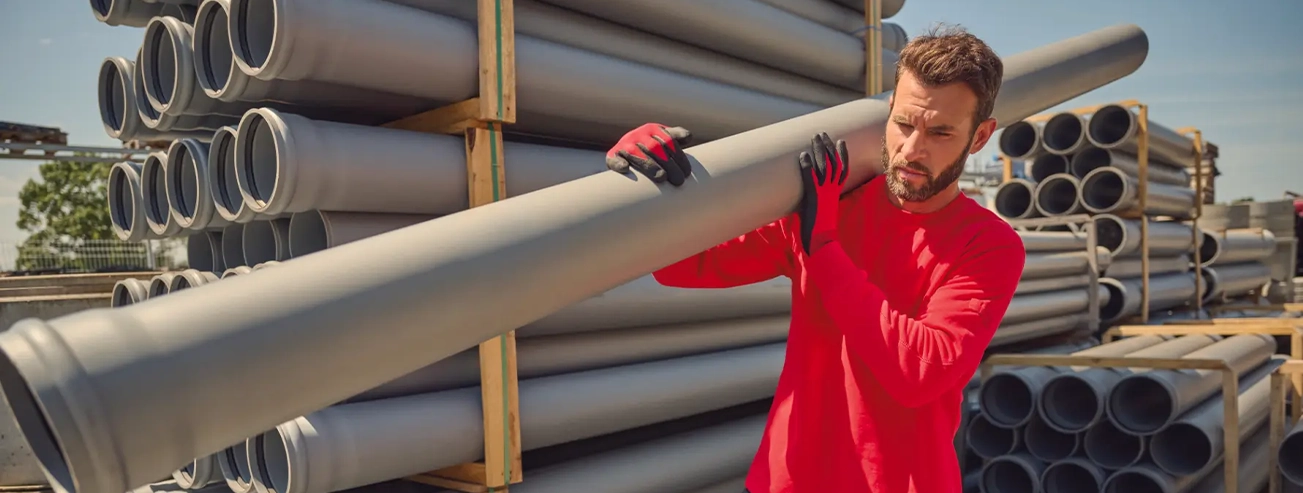
What is PPE?
Définition
Personal Protective Equipment (PPE) is designed to protect the people who wear it against one or more risks that could compromise their healthor safety in the course of their work. That’s why this type of equipment has to comply with specific standards to ensure its effectiveness and compliance with safety requirements.
In some business sectors, safety is a key issue. Handling and logistics, green spaces, chemicals, industry, electricity … many professions are described as “risky”, for a variety of reasons. These may be mechanical (falls, cuts, impact, crushing, etc.), biological or chemical (inhalation of toxic products, contact with dangerous substances, etc.)
Whatever the case, it is essential for companies and employers to identify risks correctly and to assess them in order to take the necessary measures. PPE isone of these measures.
Standards and regulations
To qualify as PPE, a textile or accessory must meet safety requirements, in accordance with European Regulation 2016/425 and at least one PPE standard. This associates an item of PPE with a specific risk (e.g. reflective colour to protect against lack of visibility), as well as setting out the obligations for the sale of these items: documentation, sewn-in PPE sticker, CE marking, instructions for use and maintenance, etc.
For example, the PPE designation for categories II and III is valid if, and only if, a notified body has carried out all the necessary checks and certified that the equipment complies with the above-mentioned EU regulation and one or more standards.
Let’s look at a few examples of standards, for which you can find references on the TopTex website.
Some are generic:
EN ISO 13688: defines the general requirements for PPE, such as comfort, fit and compatibility with other equipment. This standard does not cover requirements relating to specific risks and is therefore combined with other protection standards.
Others concern high-visibility textiles:
EN ISO 17353: specifies the requirements for reflective elements that ensure the visibility of individuals (stripes or colours) at different levels: A, B or AB, depending on whether the equipment ensures good visibility in daylight, darkness or in both cases.
Or they may relate to specific items, such as protective gloves:
EN ISO 21420: certifies their ergonomics, comfort and the water resistance of the materials they are made of, among other things.
EN 388: stipulates the requirements and test methods against the risks of abrasion, cutting, tearing, perforation and impact.
EN511: defines resistance to cold (convection or direct contact) down to -50°C
EN407: in this case, to heat (flame, radiant heat, splashes …), excluding gloves for firefighters or welders, who have their own standards
Let’s look at a few specific examples to help you get started.
PPE by WK. Designed To Work
You may already know: WK. Designed To Work is the workwear brand from KARIBAN BRANDS. Awide range of technical styles , including trousers, tops and accessories… all with the same objective: to satisfy the expectations of a demanding professionalpublic .
Short or long sleeve tops in different cuts, cargo bottoms, all available in fluorescent colourways or with reflective stripes. What do they have in common? They are all unisex, suitable for industrial washing and, above all, conform to the high-visibility PPE standard NF EN 17353.
The tops are also available in sizes XS to 5XL and the bottoms in sizes 34 to 62.
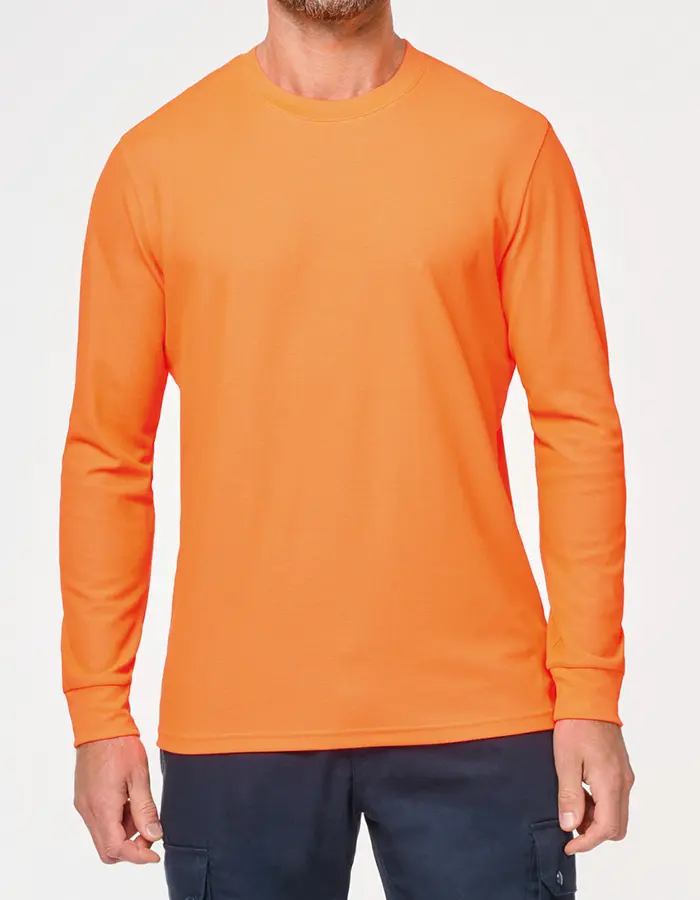
WK318
Unisex eco-responsible long sleeve cotton/polyester t-shirt
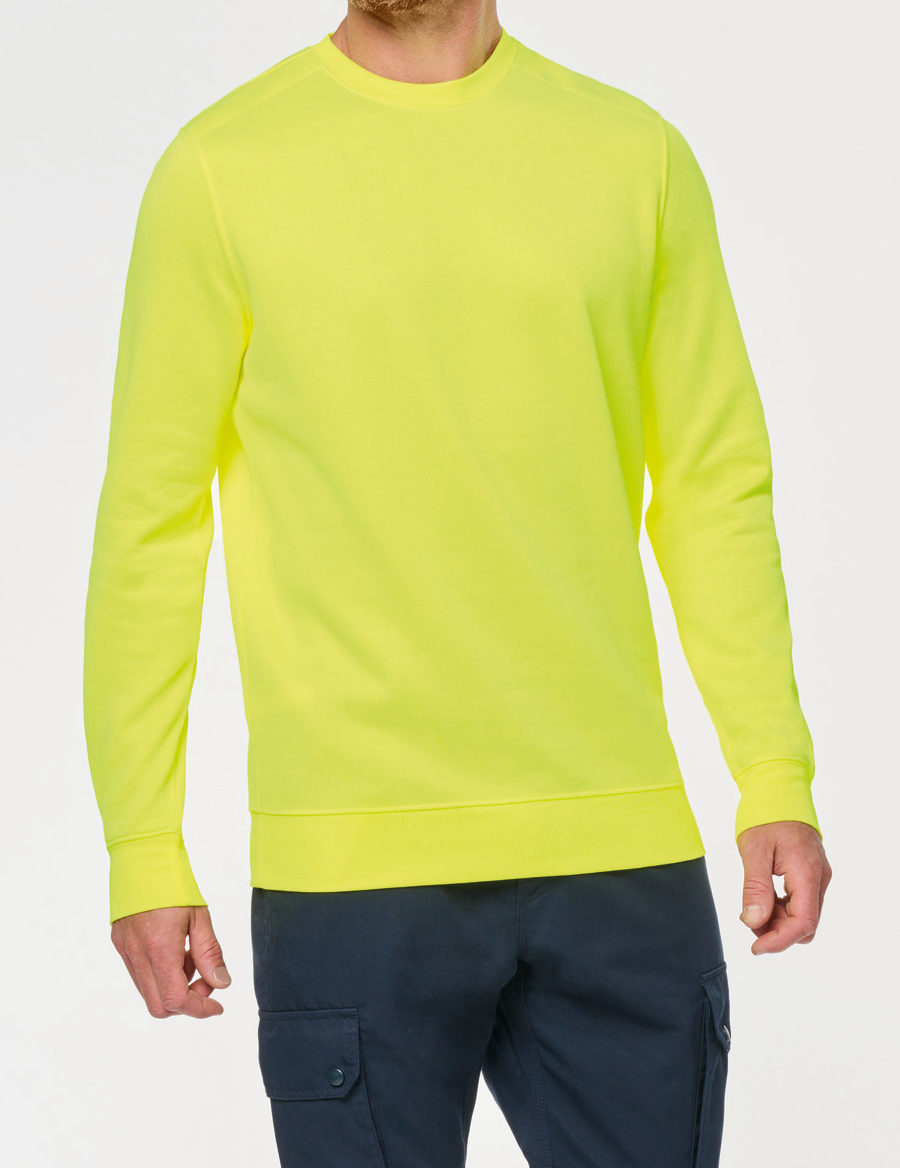
WK405
Unisex eco-responsible polyester/cotton sweatshirt
2 eco-friendly long sleeve versions: an ultra-comfortable t-shirt and a slightly warmer sweatshirt for mid-season, both made from recycled cotton and polyester.
TopTex tip
Perfect for craftspeople and workers in cooler weather who need to remain visible at all times of the day.
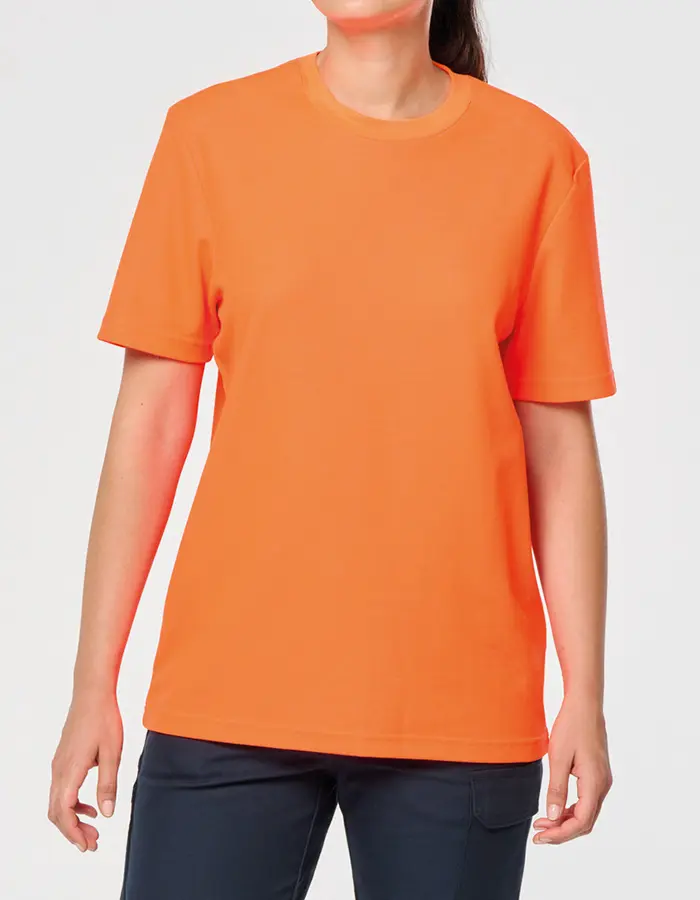
WK308
Unisex eco-responsible cotton/polyester t-shirt
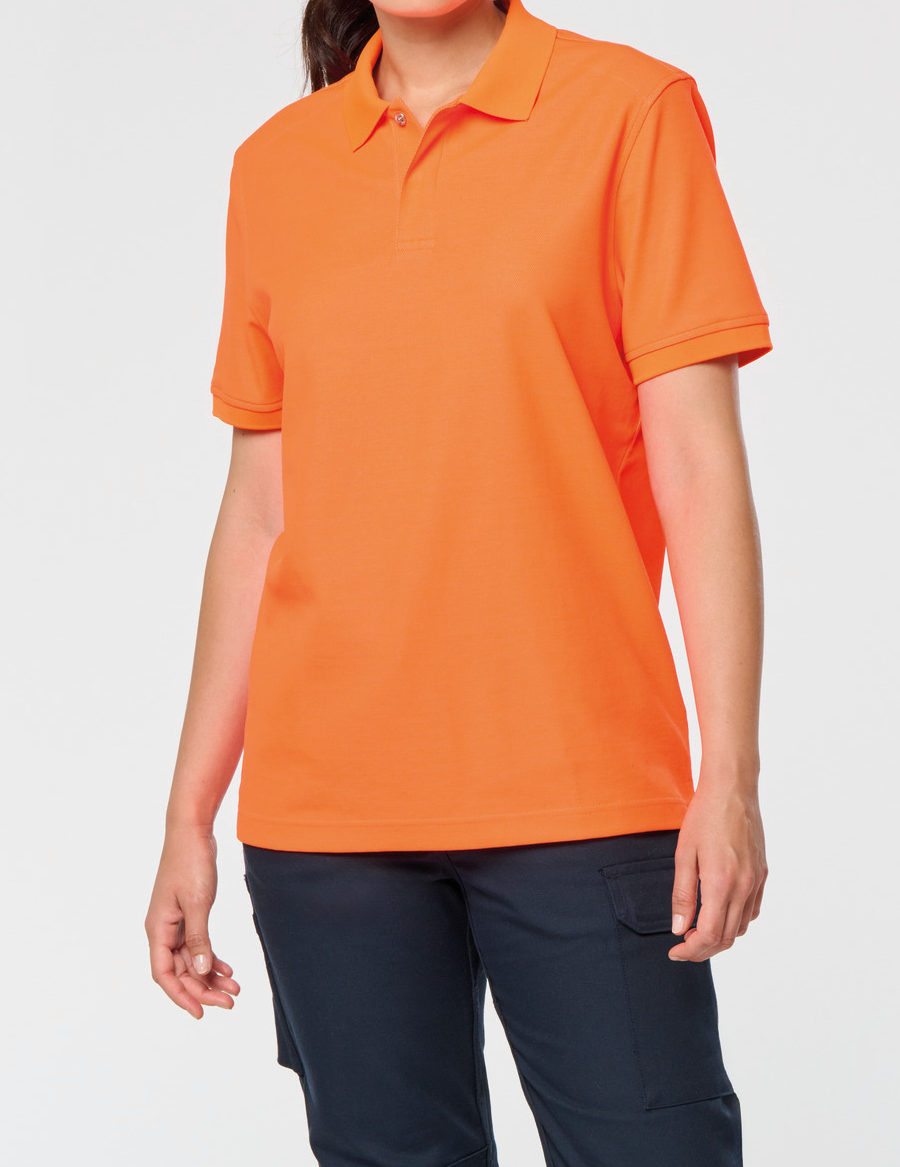
WK208
Unisex eco-responsible cotton/polyester polo shirt
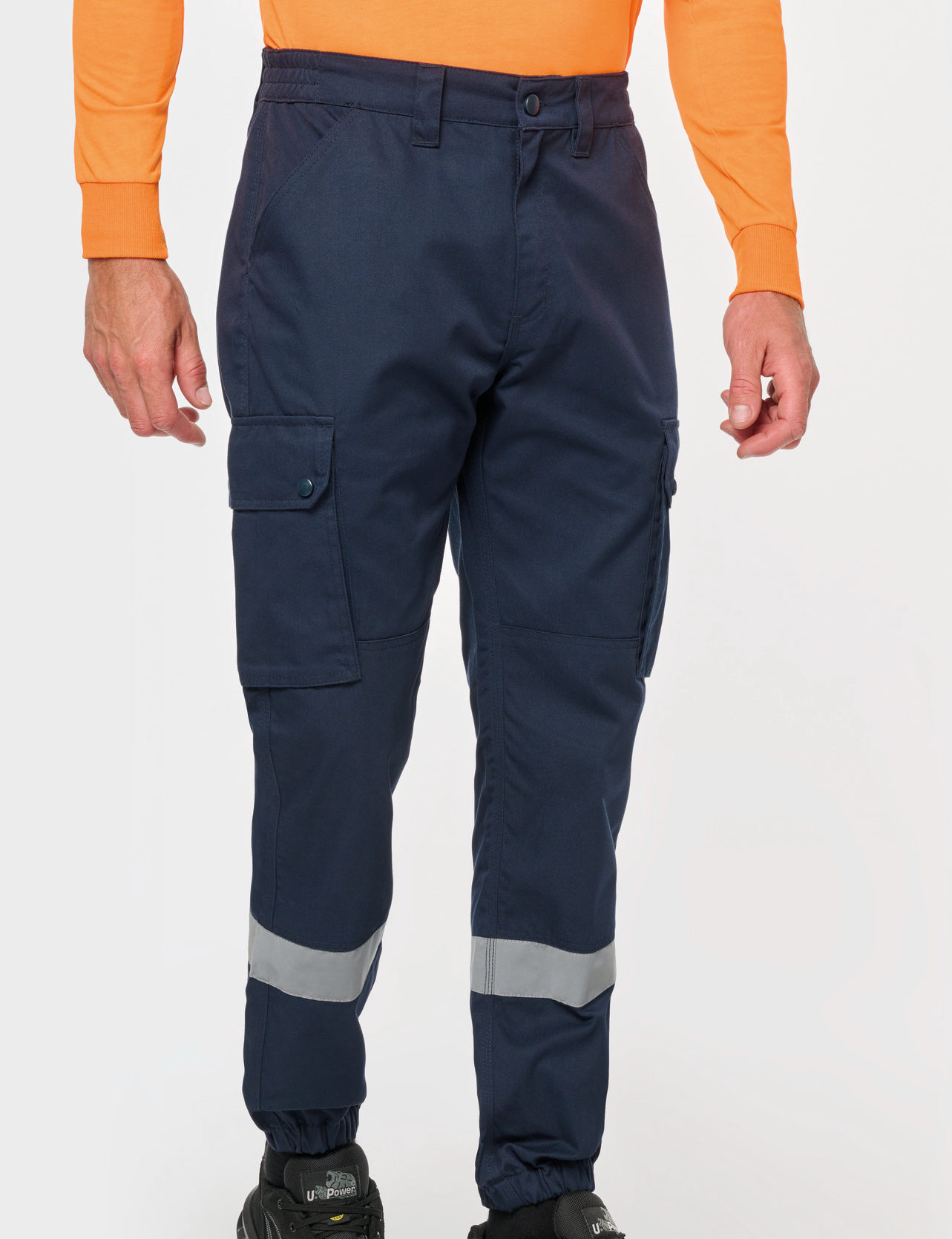
WK712
Unisex trousers with elasticated bottom leg and reflective band
And for the lower part of the body, unisex cargo trousers, which are also high-visibility NF EN 17353 standard because they have reflective strips. Other features include an elasticated belt, reinforced knees, plenty of pockets and Eve Vegan certification.
TopTex tip
Ideal for equipping public works operatives who work on roads and need to stay visible.
WK. Designed To Work also offers 6 types of professional gloves.
Gloves especially designed for light, heavy or wet handling
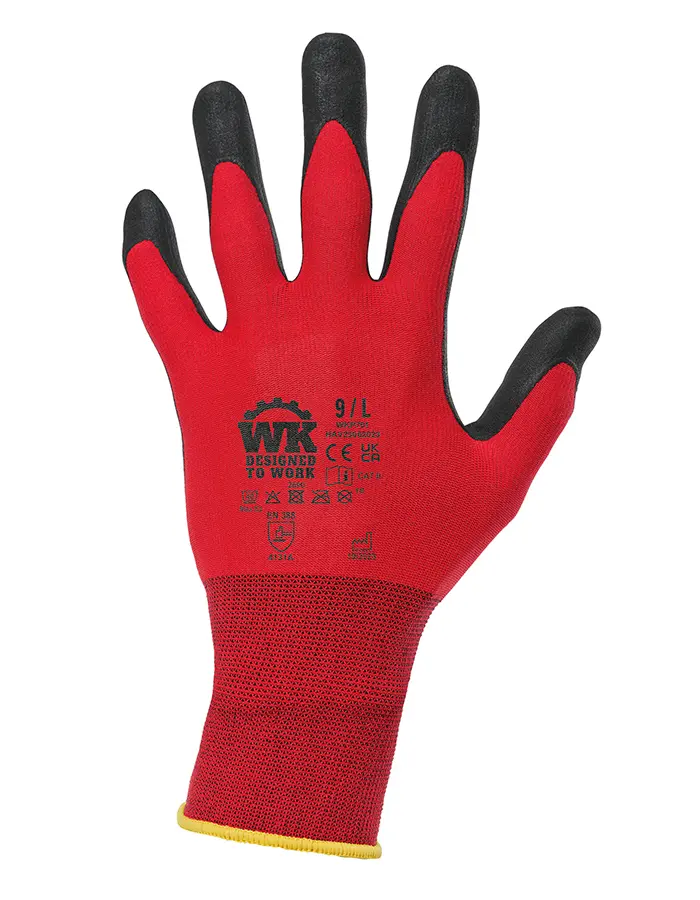
WKP701
Precision handling gloves
Ergonomic and comfortable for light handling
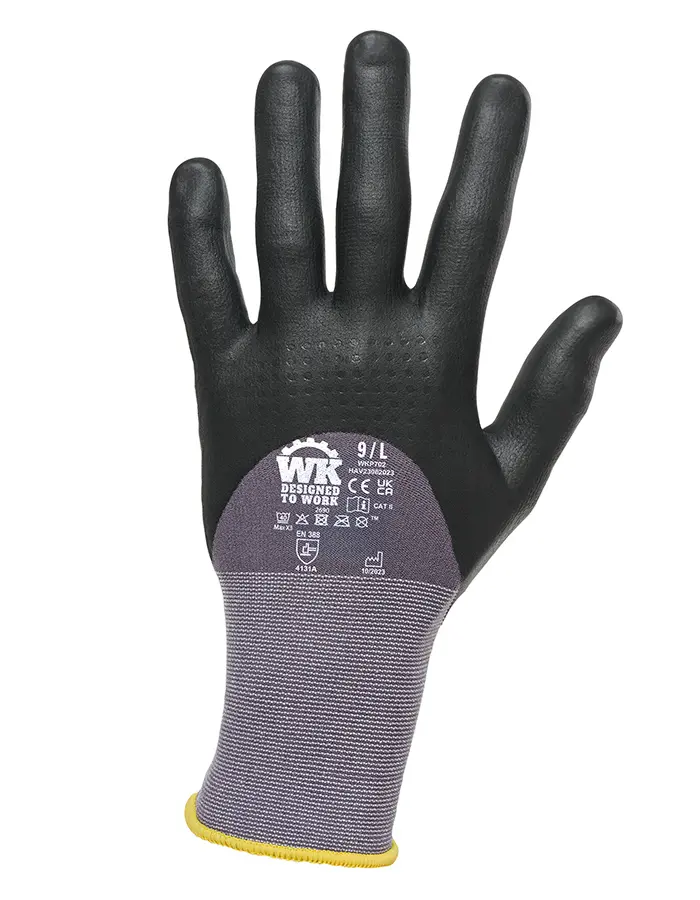
WKP702
Heavy handling gloves
Robustness and strength for heavy handling
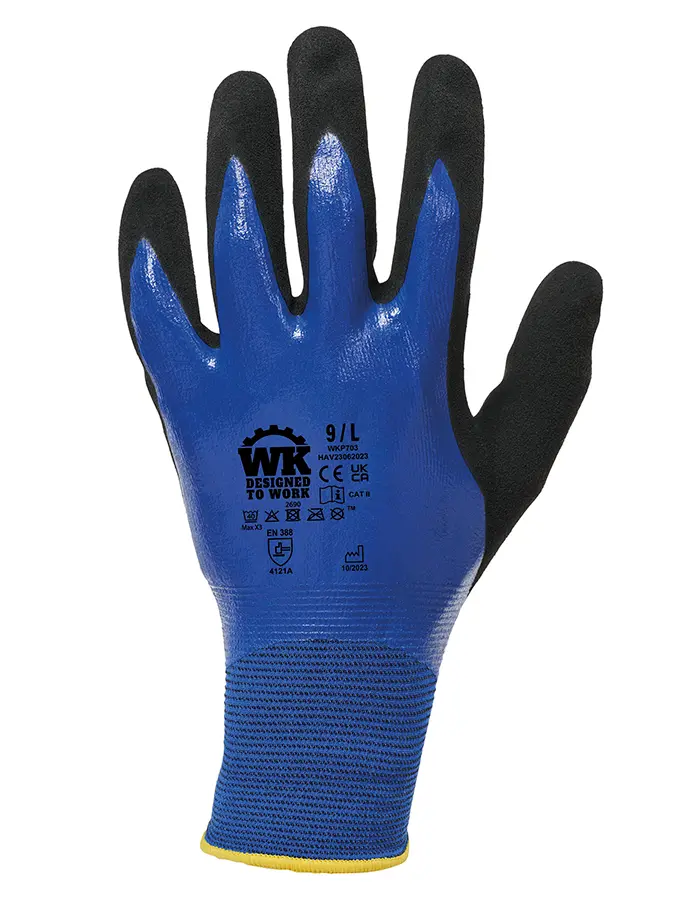
WKP703
Handling gloves for wet environments
Precision and adhesion in damp, oily or greasy conditions
TopTex tip
Models adapted to a wide range of professions: ergonomic for removal workers, robust for landscape gardeners and non-slip for industrial maintenance technicians and mechanics.
Special gloves for extra protection against cold, cuts and even impact or crushing
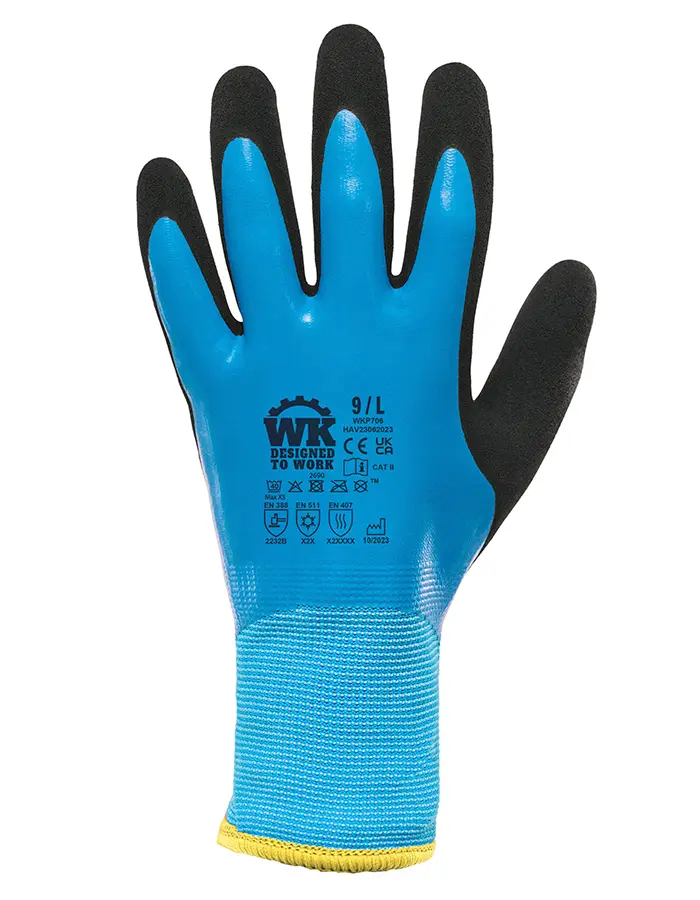
WKP706
Protective gloves for cold environments
Special gloves for extra protection against cold, cuts and even impact or crushing
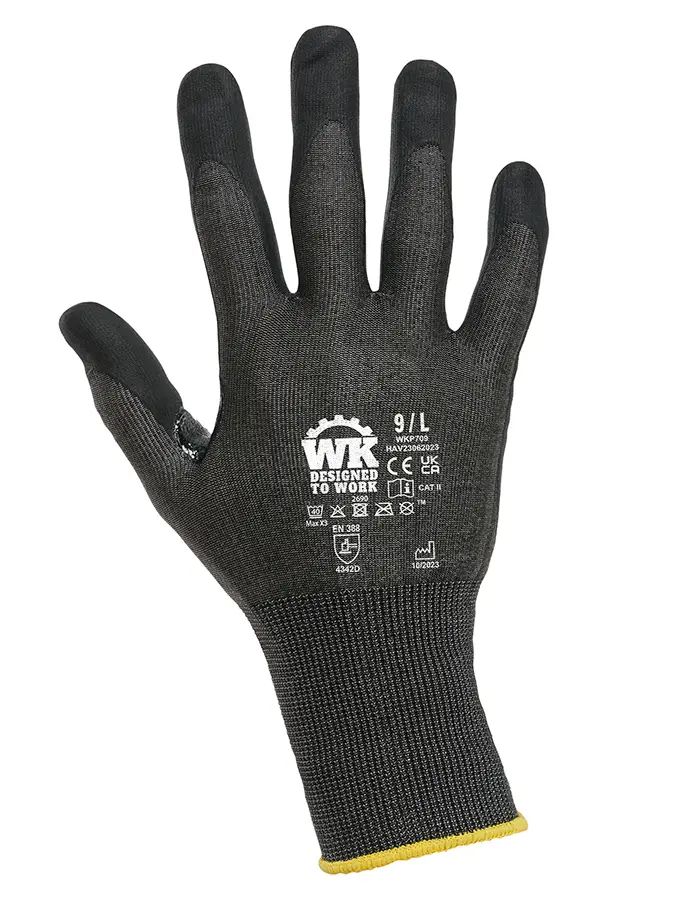
WKP709
Tactile cut protection gloves
Solidity and protection against cuts
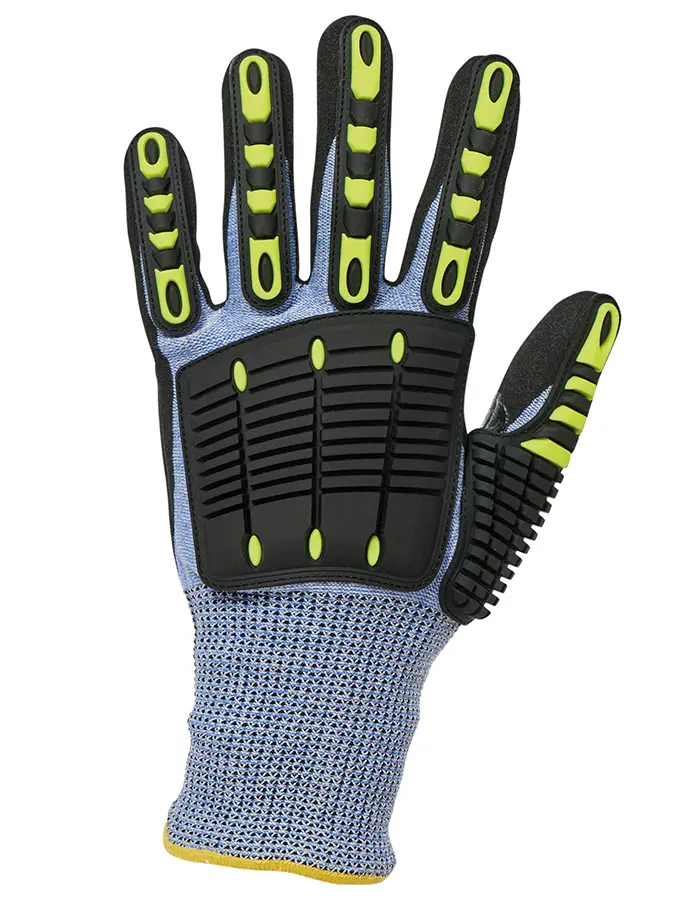
WKP710
Cut and impact protection gloves
Steel fibre impact reinforcement
TopTex tip
A range of protective gloves for people who work in cold stores, industry or construction.
How do you choose the right PPE?
To help you make your selection, here are a few questions to ask yourself (or your customers):
-
which profession(s) and what safety requirements
depending on the danger and risks incurred by a professional, the needs will be different. It could be the need for visibility for a logistics specialist working at dusk, or the need to protect hands for a construction worker or gardener.
-
what is the level of risk?
Evaluating the level of danger (frequency, intensity, etc.) will enable you to adjust your selection, since PPE and its standards meet different levels of performance.
-
what standards and regulations need to be complied with?
Depending on whether you’re looking for visibility, protection against the heat or against the cold, ask yourself about the standards involved (some of which are detailed above) to help you make the right choice.
Of course, the budget and requirements in areas other than safety (comfort, versatility, ergonomics, maintenance, colours, sizes, etc.) will play a decisive role in the choice of PPE.
Customising and maintaining PPE: a few tips
The specific characteristics of PPE inevitably have an impact on how it can be customised.
For example, reflective parts must not be marked, as this could alter their effectiveness.
In fact, as a general rule, customisation must not affect the performance of the equipment, so that it remains compliant with PPE regulations. A logo, name or team number can be applied, without reducing the visible surface of the garment, whose primary function is to protect.
Flocking, embroidery, digital printing… depending on the material, the thickness of the fabric, the desired effect and the budget, a wide choice of marking techniques is available.
TopTex tip
PPE is clothing that will be put to a severe test: dirty environments, rubbing, repeated industrial washing, etc. Think about this when customising to make sure you choose a marking method that is as indelible and resistant as possible.
It is vital to remember that worker safety is directly linked to the way in which PPE is used, stored and maintained.
This is why they must be supplied with instructions on how to wear and remove it, and also on where it can (or should!) be stored: away from light, in a cupboard, in a ventilated area, etc.
Manufacturers also give precise care instructions: temperature, recommended products, washing and drying methods. They must be followed to the letter.
In fact, PPE is subject to regular inspections to ensure its integrity and effectiveness are always up to current standards.
Ignoring the instructions for use and maintenance can result in employers having to buy new equipment, at a considerable financial cost.
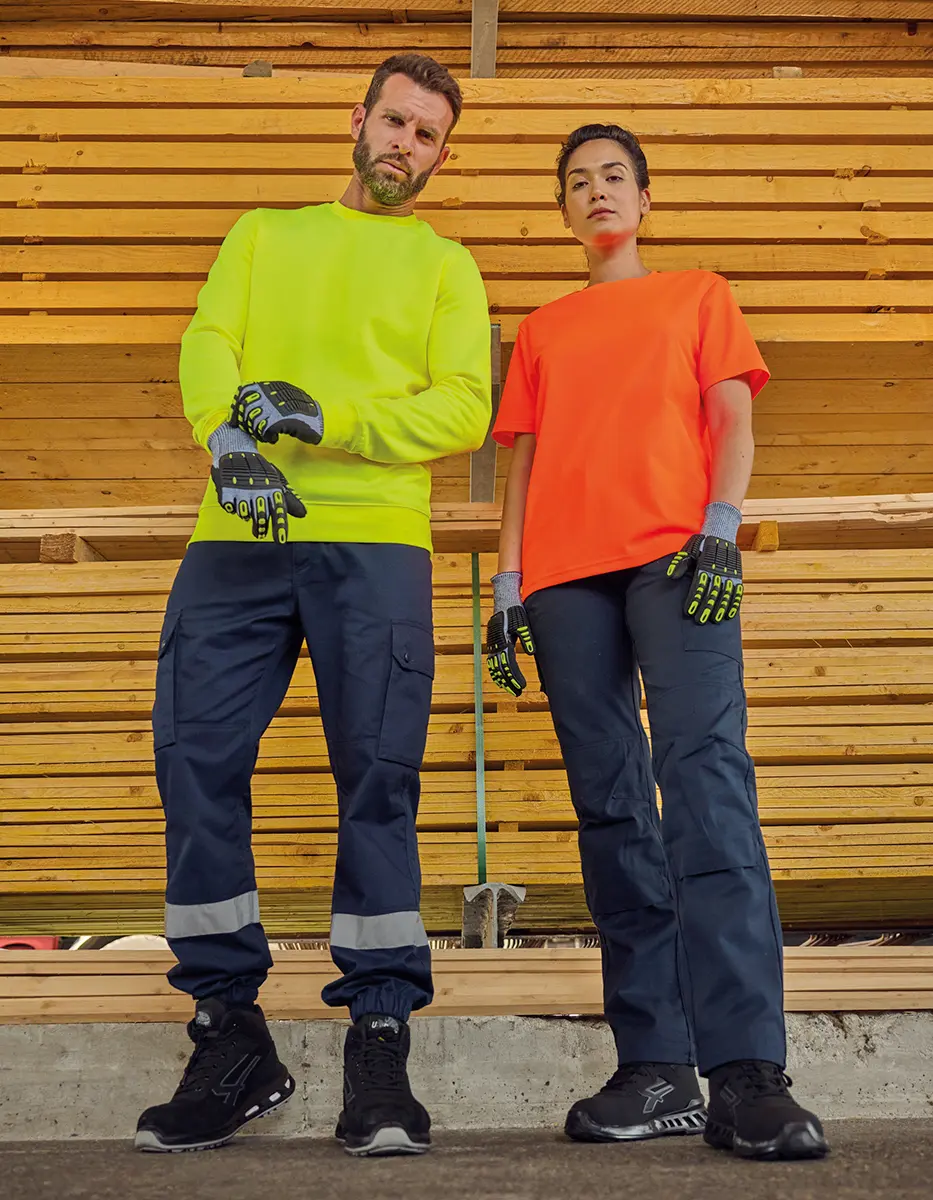
Now you’re more experienced on the subject of PPE! And as this is a very specific category, if you have any questions or need further assistance in making your choice, don’t hesitate to contact our advisers.



